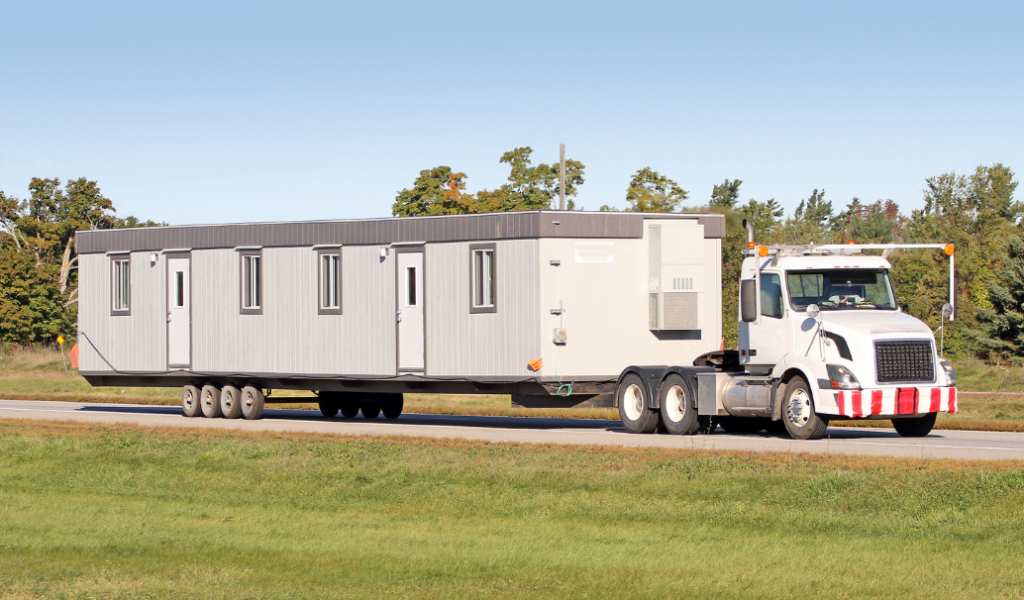Mobile homes are manufactured in factories and are an affordable housing option for most people. It’s placed on leased land and mobile parks. One of the standout features of mobile homes is the flexibility to move the structure from one location to another.
Do you want to move a mobile home? It can be an overwhelming and tiring process. A step-by-step guide to take you through the process with relevant information can make your task easier. It’s important to understand what it takes for the relocation process.
You can read through this comprehensive guide with essential tips on how to move a mobile home.
Pre-Move Planning
The pre-move planning process includes the following –
Site Evaluation
The first step to moving your mobile home is to find a suitable site. Then, conduct a thorough evaluation of the site to ensure it fulfills your requirements.
You can assess the land to consider factors such as the terrain, the access points, and any potential obstacles you may face after relocation.
Permitting and Regulations
There are certain permitting requirements and regulations for the relocation of mobile homes. A moving permit is required to relocate your manufactured home from one place to another.
You can start by researching the local requirements and regulations needed to move a mobile home. Accordingly, contact your local authorities, submit the necessary documents, and pay the permit fees.
Hiring Professionals vs. DIY
The considerations for hiring professionals vs. doing it yourself are as follows –
Pros and Cons
There are two options to relocate mobile homes. Each of the options has its pros and cons. You need to make a well-informed decision by considering certain factors such as your overall budget, time constraints, ease of taking up such a task, and so on.
Professional movers make the process simpler and streamlined. They have the experience and expertise to relocate homes and have the proper equipment and machinery. It also saves you a lot of time, effort, and energy and is more efficient. You also need to pay them a specific cost to move a mobile home.
A Do-It-Yourself approach can save you money and the costs that come with hiring a professional location. You also have complete control over the move, the packaging methods, etc., which can be done based on your timelines and convenience.
Budget Considerations
The cost to move a mobile home is also an important factor to consider when choosing a professional or when you DIY. You may wonder how much does it cost to move a mobile home — the answer depends on the various aspects involved.
The two main aspects are the size of your mobile home and the distance traveled to relocate. Other aspects also involve the weight, the escort vehicles, utilities, permits, insurance, liability, and so on.
Preparation of the Mobile Home
The preparation of the mobile home for the relocation includes the following –
Secure Loose Items
To prepare for your move, secure all the loose items inside and outside the mobile home and store them in a safe place. This is a crucial step to ensure that your belongings are safe and aren’t damaged during the transit.
You can pack the loose items inside your home that are not secured. Also, pack the outside of the home — the exterior features, such as the steps, decorative hangings, etc. Also, check the roof for any loose pieces.
Disconnect Utilities
Before the relocation process, you need to disconnect the utilities in your mobile home. This involves disconnecting the power supplies attached to the home from the mobile park.
You will need to disconnect the gas, electricity, and water supply connections completely. These are supplied by the mobile park and should be removed before moving to another place. Inform the utility companies in advance about the move to make this process easier.
Foundation and Structural Considerations
The foundation and structural considerations of the mobile home are as follows –
Foundation Inspection
Before moving a mobile home, you have to inspect the foundation that the structure will rest on. This is required to check if the foundation is strong enough and well-built for the home.
There are various kinds of foundations you can opt for to place the mobile home over. The options include a pier and beam foundation, slab foundation, basement foundation, pit foundation, and runner foundation.
Reinforcement Measures
Reinforcement measures have to be done to ensure the foundation is strong enough. A weak and damaged foundation can be the main cause of various problems with the structure of your home.
Taking the necessary reinforcement measures can make the foundation stronger and more durable to support the structure of your mobile home.
Transportation Logistics
The transportation logistics process includes the following –
Choosing the Right Movers
One of the most important aspects of transportation logistics is to choose the right movers. You can conduct research to find a moving company with good ratings and reviews for a smooth and streamlined experience.
Professional movers have the experience and expertise to handle the relocation and also understand the process better. They are also equipped with the right tools and machinery and know how to move a mobile home.
Route Planning
The next step of the transportation involves carefully planning the route to relocate your mobile home. You need to consider the size of your home and then plan the route to your new home location accordingly.
While planning the route, it’s also necessary to consider the conditions of the roads, any potential road permits, and narrow roads for smooth transportation. The weather is also another aspect to consider to ensure a seamless transit – plan the relocation during favorable weather conditions.
Safety Measures During Transit
The safety measures to follow during the transit for a safe and secure relocation include the following –
Secure the Home
Mobile homes should be secured well for the transit stage. Once the home is lifted and loaded onto the trailer for transportation, ensure it’s secured.
It’s an essential safety measure to prevent any damage and movement during transportation. To move a mobile home safely, it needs to be strapped and stabilized onto the trailer during transit.
Escort Vehicles
Mobile homes are heavy and are transported with trucks and trailers. The main purpose of the escort vehicles is to alert the other drivers on the road of the presence of the trucks and trailers carrying your home. You need to arrange escort vehicles due to the size and weight of the structure being carried by road.
They are considered public safety vehicles and ensure a smooth transit of your mobile home without any disturbances on the road. It’s also essential to drive safely and carefully for the safety of everyone involved.
Post-Move Setup
The post-move setup after relocating the home to the new site includes the following –
Reconnection of Utilities
The post-move setup involves the reconnection of all the utilities of your mobile home. You need to reconnect the utilities, such as the heating system, water supply, gas supply, electrical power supply, and so on.
This is necessary to turn your mobile home into a functional and comfortable space for your day-to-day living needs and requirements.
Site Leveling
After the transportation process of the mobile home, it has to be leveled. Leveling the site is an important step to ensure it is evenly placed from front to back.
It’s important to level the mobile home to avoid a tilted home. The leveling process can get your doors and windows to open properly and prevent the floor from sinking.
Post-Move Inspection and Maintenance
The post-move inspection and maintenance process of your mobile home includes the following –
Post-Move Inspection
After you move a mobile home, you need to conduct a thorough inspection. This is necessary to check if there are any potential damages to your mobile home.
There could be some damages that happen during transit or while moving and placing the mobile home from one place to another. A thorough inspection can help you assess the extent of damage and the area of the damage.
Immediate Maintenance
The maintenance check after you move a mobile home involves inspecting the roof, the skirting, the foundation, the sides, and so on to check if everything is in good condition.
If you find any damages, you can choose to undertake an immediate maintenance routine. This can solve the potential damages without further delay, even minor damages. It helps keep your mobile home in good shape and can extend the service life of the home.
Conclusion
The above step-by-step guide provides insight into how to move a mobile home yourself to make the home relocation process easier and hassle-free. It can give you and your family the required knowledge and understanding for a smooth and secure home mobile relocation.
There are various steps involved to complete the entire process of moving a mobile home from one place to another. A lot of planning, execution, and legal procedures and permits to complete the whole process are required.
You can hire a professional moving company or choose to do it by yourself to relocate your mobile home. Each stage of the relocation involves a few processes that can make the transition smooth.

